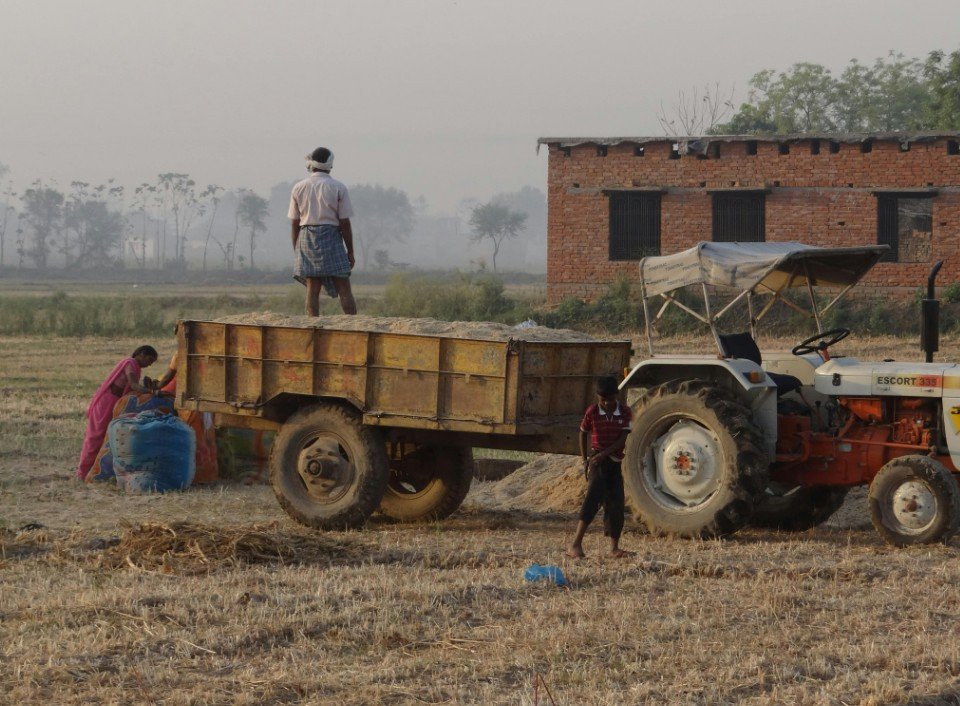Pakistan’s agricultural sector, a lifeline for rural livelihoods and national food security, is at a critical crossroads. Despite contributing roughly 24% to GDP and employing nearly 38% of the workforce, yield inefficiencies threaten economic stability and food sufficiency. The conversation must move beyond loans and subsidies—towards real, sustainable change.
The nation’s population is outpacing food production. Wheat, rice, cotton, and sugarcane growth rates are stagnant, leaving Pakistan increasingly dependent on imports. Without swift, systemic reform, the country risks deeper economic and social stress.
Yield Gaps and a Growing Population
In 2025, Pakistan’s total cereal production—including wheat, rice, and maize—stood at 47.27 million tonnes, averaging just 3.63 tonnes per hectare. This is far below the South Asian average of 4.29 tonnes and dramatically lower than developed economies, which boast 6.92 tonnes per hectare.
Over the past decade, population growth has surged by 28%, yet cereal yield improvements have lagged at just 21%. The gap between demand and supply is widening. Wheat imports alone have accounted for roughly 7% of total food imports in recent years, while even raw cotton—once a major export—now comprises 4% of imports.

It’s clear that production inefficiencies aren’t just an agricultural concern—they’re an economic fault line. With yields hovering nearly 30% below global standards, Pakistan’s food system is under pressure like never before.
Credit Alone Isn’t the Answer
For years, policymakers have leaned heavily on credit schemes as the solution for agricultural progress. Banks have expanded access to finance, offering loans, subsidies, and micro-lending programs, but the results have been modest. Agricultural growth in 2025 slowed to just 1.51%, far behind the South Asian average of 3.6%.
-
Only 5–10% of farmers use mechanical equipment or digital platforms for market intelligence.
-
Over 90% rely on traditional methods, disconnected from pricing trends, weather forecasts, and modern practices.
Financial support is crucial, yes—but it’s only one piece of the puzzle. Pakistan needs a model that combines credit with mechanisation, technology adoption, and rigorous farmer training. Without integrating innovation into everyday farming, loans will only patch the surface, not fix the underlying issues.
Mechanisation and Smart Farming: The Missing Link
Mechanised farming, including harvesters, seed drills, planters, and automated irrigation, dramatically reduces manual labour and waste while improving yields. Yet adoption in Pakistan remains frustratingly low. Most farmers still plough fields with outdated tools, limiting productivity and efficiency.
Digital agriculture is barely scratching the surface. Sensors, AI-powered weather prediction apps, Geographic Information Systems (GIS), and digital farming platforms are slowly making inroads, but most smallholders remain unaware or unable to access these tools.
Globally, precision agriculture is reshaping how food is grown: satellite mapping, digital soil testing, drones, and AI models optimize resource use and enhance decision-making. Pakistan has the potential to leapfrog decades of inefficiency by integrating similar tools—but only if extension services, training programs, and investment in infrastructure are ramped up.
-
Real-time monitoring of soil moisture, pest infestations, and crop growth can prevent losses.
-
AI-driven weather forecasts can guide irrigation schedules and pesticide applications.
-
Digital market platforms provide farmers with timely price information, reducing dependence on middlemen.
Bridging Knowledge Gaps
Technology alone isn’t enough. Farmers must also be trained to use these tools effectively. Ongoing education, workshops, and hands-on extension services are critical. Currently, most initiatives focus narrowly on credit disbursement rather than skill-building.
Pakistan’s agricultural success will hinge on knowledge transfer. Farmers who understand how to leverage AI apps, smart irrigation, and modern seed varieties will naturally achieve higher yields and generate better income.
A practical starting point could involve government-led programs offering subsidized access to mechanisation combined with mandatory digital training. Partnerships with tech firms and universities can accelerate adoption, while local cooperatives can act as knowledge hubs for rural communities.
Integrating Innovation with Policy
Policy frameworks need to reflect this shift. Agricultural support should be multi-dimensional: loans, yes, but also investment in research, seed development, mechanisation, and climate-resilient practices.
| Sector Focus | Current Adoption | Potential Impact |
|---|---|---|
| Mechanised Equipment | 5–10% | +30–40% yields |
| Digital Farming Apps | <10% | +20–30% efficiency |
| AI Weather Tools | <5% | Reduced crop loss |
| Modern Seed Varieties | 15–20% | +25% yield |
Integrating technology, policy, and finance can create a more resilient agricultural ecosystem. It’s not just about boosting production—it’s about empowering farmers, securing livelihoods, and ensuring food security for a growing population.
Sowing Change Beyond Banking
The bottom line: credit alone won’t transform Pakistan’s agriculture. A broader approach—mechanisation, technology, AI, digital market platforms, and continuous farmer education—is essential. Financial institutions can play a role, but only if their efforts are aligned with innovation and skill-building initiatives.
Pakistan’s farmers have the potential to compete globally, yet they’re trapped in outdated systems. Bridging the gap between traditional methods and modern techniques is not a luxury—it’s a necessity for national stability and economic growth.
The country stands at a turning point. Policies, technology, and finance must converge. Otherwise, the gap between what we produce and what we need will only grow, leaving millions vulnerable to food insecurity. Real progress in agriculture demands action beyond banking. The seeds of change must be sown today.








